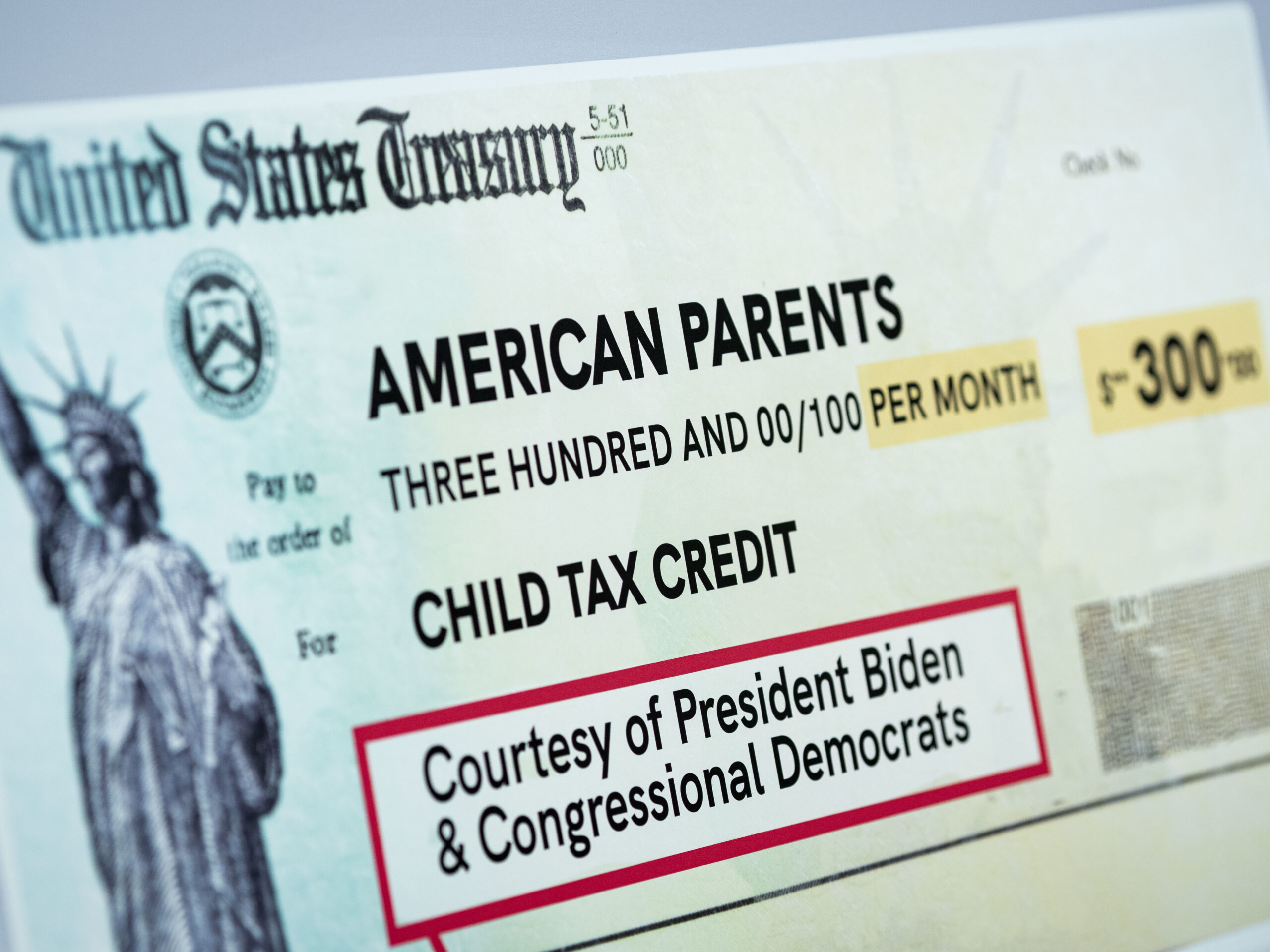The New Child Tax Credit Brings A Drop In Households Reporting Hunger

A poster of the Child Tax Credit during a news conference at the U.S. Capitol in Washington, D.C., U.S., on Thursday, July 15, 2021. The President’s agenda got a boost with Senate Democratic leaders outlining plans for more than $4 trillion in domestic programs, but enactment hinges on negotiating details on Medicare, taxes, immigration and … Continued
Al Drago / Bloomberg via Getty Images
After the child tax credit was implemented, fewer households with children reported that they don’t have enough to eat, according to a new federal survey.
The Internal Revenue Service began sending out monthly child tax credit payments of $250-300 to about 35 million eligible families on July 15. The payments are set to continue through December.
The Census Bureau conducted a survey before and after the credit was sent out. In a span of just six weeks, it showed the credit coincided with a quick drop in food insufficiency and a drop in those who say they have difficulty paying weekly expenses.
The survey showed that households without children did not see a change in food insufficiency in the same time frame.
Households that received the tax credit reported spending it on more than one thing, but 47% said they spent the money on food. For households with a least one child under the age of five, 17% spend the tax credit on child care.
The pandemic has dramatically increased the number of children in the country who experience hunger. According the nonprofit Feeding America, 13 million — or one in every six children — don’t know where their next meal will come from.
9(MDAxODM0MDY4MDEyMTY4NDA3MzI3YjkzMw004))








